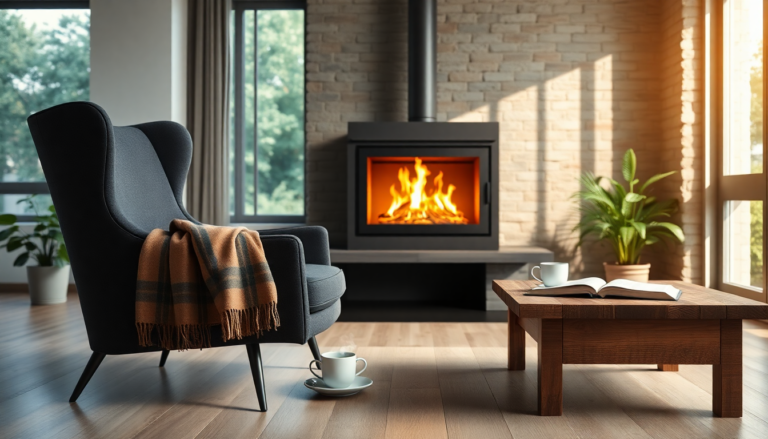Argomenti trattati
There’s something undeniably appealing about a crackling wood fire in the hearth, isn’t there? Yet, the upkeep and effort that come with it can sometimes dim that charm. That’s why many homeowners are now exploring the idea of converting their wood-burning fireplaces to gas. This shift not only promises convenience but also provides a steady source of warmth at the simple push of a button. Curious about the financial implications, installation processes, and overall perks of making this switch? Let’s dive in!
Understanding the Costs of Conversion
When it comes to converting a wood-burning fireplace to a gas option, the financial side is a key factor to consider. Typically, the cost for this conversion ranges between $2,000 and $5,000. This estimate primarily covers the price of the gas insert or gas logs, along with their installation. Keep in mind, though, that this doesn’t factor in the potential costs of installing a new gas line if you don’t already have one in place. According to industry experts, a straightforward conversion using gas logs with an existing gas line can set you back as little as $1,500. On the other hand, if you’re opting for a more complex setup featuring high-end gas inserts and new venting, you could be looking at totals soaring to $7,500 or even more.
To give you a clearer picture of these costs, let’s break down the different components involved in a fireplace conversion. The two main types of gas fireplaces are log sets and inserts. Log sets are designed to fit inside your existing firebox, offering a similar vibe to wood without the mess, and generally at a lower installation cost. On the flip side, gas inserts are fully enclosed units that typically demand a larger investment but can deliver a more complete heating solution.
The Installation Process and Timeline
Now, you might be wondering, how long does the installation process actually take? Well, the good news is that converting to a gas fireplace is usually a pretty quick affair, often wrapping up in just one to two days. This timeline generally includes any necessary adjustments to your existing masonry, the installation of the gas line, and the setup of your chosen gas log set or insert. However, keep in mind that factors like consultations, permit requirements, or significant structural changes could extend this timeline.
While some DIY enthusiasts might think about tackling the installation themselves to save some cash, it’s wise to consider bringing in a qualified technician. Proper installation is crucial for ensuring that the gas line connection and venting systems meet safety standards, minimizing risks like gas leaks or carbon monoxide exposure. Plus, a professional assessment can give you peace of mind, knowing that everything complies with local building codes.
Evaluating the Advantages and Disadvantages
Like any home improvement project, converting a wood-burning fireplace to gas has its pros and cons. If convenience, efficiency, and a cleaner operation are high on your priority list, this conversion could be a fantastic investment. Many homeowners love the ease of igniting a fire with just a flip of a switch, skipping the hassle of chopping wood and dealing with ashes.
However, if you’re someone who treasures the sensory experience and tradition of a genuine wood fire, your decision might be a bit more complicated. It’s essential to weigh your budget, how often you use your fireplace, and what’s most important to you—ambiance or convenience. Talking with a professional installer could provide you with tailored insights, ensuring you make a well-informed choice that aligns perfectly with your preferences and lifestyle.

